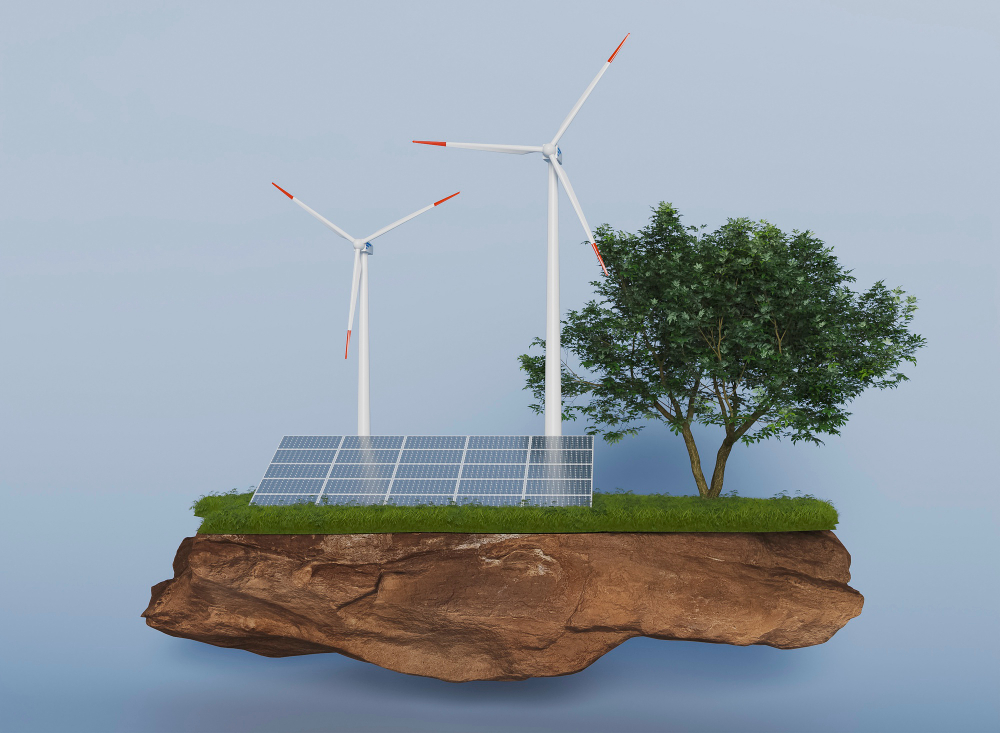The impact of technology on our society, economy, and environment cannot be underestimated. While technology has presented us with certain environmental and social challenges, it also holds tremendous potential to tackle urgent global issues like environmental degradation, climate change, food scarcity, waste management, and more [3]. This article delves into the various ways in which emerging technologies are playing a significant role in safeguarding our planet on a global scale. By harnessing these innovative solutions, we can lay the foundation for a more sustainable and resilient future.
Table of Contents
- 1. Harnessing AI and IoT for Environmental Management
- 2. Solar Glass: A Renewable Energy Solution
- 3. Graphene: A Miracle Material for Sustainability
- 4. Addressing the Problem of Single-Use Plastics
- 5. Advancements in Green Technologies for Power Generation
- 6. Distributed Sensors: Enabling Sustainable Measurement
- 7. Smart Grids: Revolutionizing Power Infrastructure
- 8. Carbon Capture and Storage: Mitigating CO2 Emissions
- 9. Fusion Power: Sustainable Energy Source
- 10. The Potential of Artificial Intelligence in Environmental Protection
- 11. Collaborative Efforts to Fight Plastic Pollution
- 12. Sustainable Agriculture: Leveraging Technology for Food Production
- 13. Circular Economy: Redefining Resource Consumption and Waste Management
- 14. Green Buildings: Energy-Efficient and Environmentally Friendly Infrastructure
1. Harnessing AI and IoT for Environmental Management
In the fight against climate change, the integration of Artificial Intelligence (AI) and the Internet of Things (IoT) has emerged as a powerful tool. AIoT (AI combined with IoT) enables the refinement of performance evaluation for abatement measures and optimizes emissions predictions [1]. By analyzing and learning from vast amounts of data, AIoT can identify patterns and optimize abatement strategies, resulting in lower overall marginal abatement costs. This technology opens up new possibilities for effective environmental management and sustainability.
2. Solar Glass: A Renewable Energy Solution
Solar glass, an emerging technology, offers a promising solution for generating renewable energy. This transparent window material captures solar energy and converts it into electricity. By integrating solar glass into skyscrapers and buildings, we can harness clean energy without compromising aesthetics. This technology holds the potential to revolutionize the way we think about energy production and consumption [2].
3. Graphene: A Miracle Material for Sustainability
Graphene, an ultra-thin layer of graphite, has garnered significant attention due to its remarkable properties. Stronger than steel and more conductive than copper, graphene presents numerous possibilities for sustainability. Ongoing research explores its potential applications in various fields, including energy storage, water filtration, and environmental sensing. The versatility of graphene makes it a valuable asset in the development of eco-friendly technologies [2].
4. Addressing the Problem of Single-Use Plastics
The global issue of single-use plastics calls for urgent action. Initiatives are underway to ban or restrict their use, and communities are embracing sustainable alternatives. By reducing reliance on single-use plastics, we can alleviate the strain on the environment. Local efforts, such as limiting plastic straw distribution and eliminating single-use plastic bags from stores, contribute to a more sustainable future [2].
5. Advancements in Green Technologies for Power Generation
The advancement of green technologies is crucial for overcoming power-related challenges in the journey towards sustainability. Wind and solar power, capable of generating vast amounts of electricity, face limitations due to their intermittent nature. However, ongoing developments in energy storage, grid management, and smart systems are addressing these limitations. Innovations in battery technology, grid flexibility, and demand response mechanisms are driving the adoption of renewable energy sources on a global scale [2].
6. Distributed Sensors: Enabling Sustainable Measurement
The use of distributed sensors has become increasingly important in measuring and monitoring environmental parameters. These sensors form a networked environment, facilitating data collection and analysis for various sustainability efforts. By gathering real-time data, distributed sensors contribute to informed decision-making and the implementation of targeted interventions. They have proven instrumental in tackling issues such as air pollution, water quality, and climate monitoring [6].
7. Smart Grids: Revolutionizing Power Infrastructure
The traditional power grid infrastructure is being transformed by the advent of smart grids. Conventional grids are susceptible to fluctuations in usage and output, leading to inefficiencies and reliability issues. Smart grids leverage advanced monitoring, control, and communication technologies to optimize power distribution, enhance grid resilience, and enable seamless integration of renewable energy sources. Through real-time data analysis, smart grids improve energy efficiency and facilitate a more sustainable and reliable power supply [7].
8. Carbon Capture and Storage: Mitigating CO2 Emissions
Carbon Capture and Storage (CCS) technologies offer a potential solution for reducing CO2 emissions. By capturing CO2 from industrial processes or power plants, it can be transported and stored underground, preventing its release into the atmosphere. CCS plays a crucial role in achieving climate targets and transitioning to a low-carbon economy. Ongoing research and development efforts aim to enhance the efficiency and cost-effectiveness of CCS technologies [8].
9. Fusion Power: Sustainable Energy Source
Fusion power, a concept inspired by the sun’s fusion of hydrogen nuclei, holds immense promise as a sustainable energy source. Unlike nuclear fission, fusion power offers a virtually limitless supply of clean energy with no greenhouse gas emissions. Scientists and engineers worldwide are working towards achieving controlled fusion reactions, which would revolutionize the energy landscape and contribute to mitigating climate change [9].
10. The Potential of Artificial Intelligence in Environmental Protection
Artificial Intelligence (AI) has the potential to revolutionize environmental protection efforts. AI-driven systems can process vast amounts of data, identify patterns, and provide actionable insights for sustainable resource management. From optimizing waste management to predicting and mitigating the impact of natural disasters, AI offers innovative solutions to complex environmental challenges. Initiatives like Microsoft’s AI for Earth program are leveraging AI to drive positive environmental change [10].
11. Collaborative Efforts to Fight Plastic Pollution
The Global Plastic Action Partnership has collaborated with UpLink to launch the Global Plastic Innovation Network (GPIN). GPIN aims to bring together innovators worldwide who are dedicated to eradicating plastic pollution. Through this platform, a community of innovators is working together to develop and implement sustainable solutions to tackle the plastic pollution crisis [4].
12. Sustainable Agriculture: Leveraging Technology for Food Production
Technology is playing a vital role in promoting sustainable agriculture and ensuring food security. Innovations such as precision farming, IoT-enabled sensors, and drone technology are being employed to optimize resource use, reduce waste, and improve crop yields. These advancements enable farmers to make data-driven decisions, conserve water and energy, and minimize the use of pesticides and fertilizers. By combining traditional farming knowledge with modern technology, sustainable agriculture practices can contribute to environmental protection and global food production [11].
13. Circular Economy: Redefining Resource Consumption and Waste Management
The circular economy approach aims to redefine how resources are consumed and waste is managed. It emphasizes the reduction, reuse, recycling, and recovery of materials to minimize environmental impact. Technological innovations such as advanced recycling techniques, material recovery facilities, and waste-to-energy systems are driving the transition towards a circular economy. By closing the loop in material flows, these technologies help conserve resources, reduce waste generation, and promote sustainable consumption and production patterns [12].
14. Green Buildings: Energy-Efficient and Environmentally Friendly Infrastructure
Green buildings are designed and constructed to be energy-efficient, environmentally friendly, and sustainable throughout their lifecycle. These buildings incorporate technologies such as energy-efficient lighting, smart HVAC systems, renewable energy generation, and efficient insulation. They aim to minimize energy consumption, reduce greenhouse gas emissions, and provide healthier indoor environments. Green building practices, including sustainable materials and construction techniques, contribute to resource conservation and the mitigation of climate change impacts [13].
By implementing sustainable agriculture practices, adopting a circular economy approach, and promoting the development of green buildings, we can further enhance our efforts to protect the environment and create a more sustainable future.













0 Comments